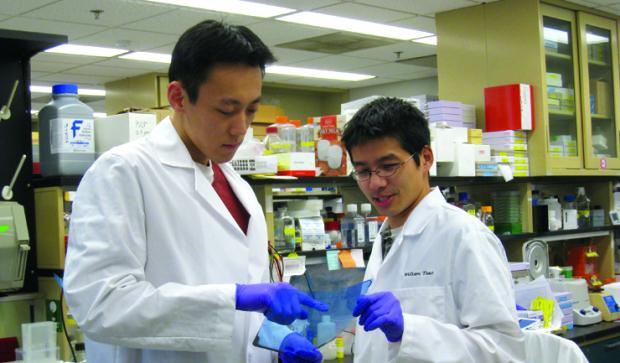
C90RF72 Research Models

Phillip Wong, professor in the departments of pathology and neuroscience at Johns Hopkins University School of Medicine in Baltimore, is working — with MDA support — to develop research mouse models of C9ORF72-related ALS.
With colleagues, he plans to use the models to study more closely the mechanism by which the C9ORF72 mutation gives rise to motor neuron degeneration and disease. The mice also will be made available for study by other researchers via the Jackson Laboratory in Bar Harbor, Maine, which manages colonies of mice to supply research institutions and labs.
Based on disease research in other fields (particularly myotonic muscular dystrophy, which is caused by a repeat expansion mutation, like C9ORF72=related ALS) Wong believes there likely are two possible ways in which C9ORF might cause ALS — gain of function and loss of function. It also could be a combination of both, so his team is developing several models for use in investigating the various possible mechanisms.
To test the loss-of-function hypothesis, the team will build two kinds of knockout mice. In these mice, the C9ORF72 gene will be deleted completely (called a standard knockout), at certain times or in certain tissues (a conditional knockout).
One of the first tests using knockout mice probably will be to see if mice completely lacking the C9ORF72 gene survive long enough to be born. If they don’t, it’s called embryonic lethal, and signifies that the proteins encoded by C9ORF72 are required for life and survival. (For example, if scientists knock out the SOD1 gene, mice tend to do all right. But if they knock out the TDP43 gene, the mice don’t survive.)
To test the gain-of-function hypothesis, Wong’s team will engineer the expanded repeat in a man-made artificial gene that will be transplanted into the mouse model. If this results in motor neuron degeneration, similar to ALS, it suggests that the presence of the expanded repeats is sufficient to cause disease.
To speed the pace of his research, Wong and colleagues are working in parallel to develop the different types of mouse models. He also is collaborating with other groups working on fruit fly models, nematode (a type of roundworm) models and human cell culture models. The repeats his team generates are introduced into the other model systems.
It’s a “comprehensive approach,” he says. “Everyone’s working together to try to understand how this disease works.”
Enthusiasm among his team members is running high.
“It’s very exciting — that’s an understatement,” Wong says of his work on C9ORF72. “We’re very excited about the possibility that we can translate this work into the clinic. We believe that’s possible, and that our work can really help people with ALS.